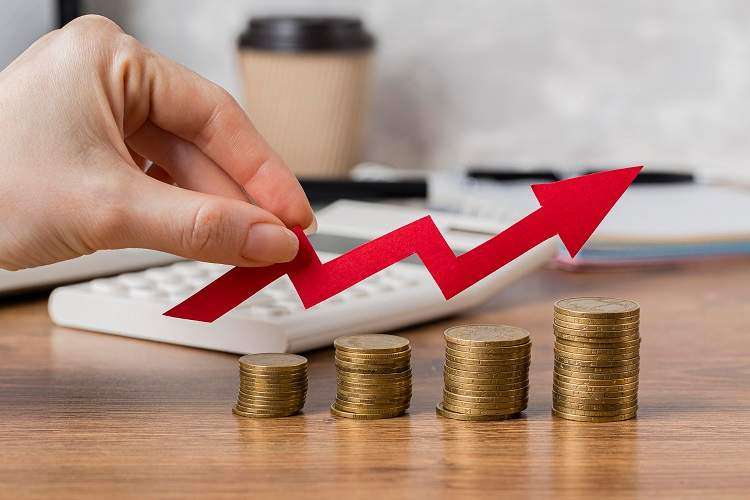
When Rising Interest Rates Affect Borrowers, the impacts can be significant. Higher rates make borrowing more expensive, increasing your monthly mortgage or loan payments. This can hinder affordability, especially for large purchases like cars and homes.
Variable-rate loans also become pricier when rates rise. Existing borrowers pay more unless they refinance at a lower fixed rate. Rising rates additionally slow lending activity, as fewer people qualify for loans at higher rates.
This reduces consumer purchasing power. However, higher deposit account yields can benefit savers. Overall though, Rising Interest Rates Affect Borrowers negatively by increasing costs and limiting access to affordable credit. Understanding the impacts of all.
Why Are Interest Rates Rising?
The Federal Reserve’s program of raising interest rates aims to curb growing inflation and slow down economic expansion. Following nearly zero rates during the pandemic, the Federal Reserve raised its benchmark rate three times this year. The most recent increase, which took place on September 21, resulted in an increase of 0.75 percentage points.
Further rate increases are anticipated in 2022 and perhaps even 2023. Preventing a recession by managing inflation is the Federal Reserve’s main objective. Still, these higher interest rates make borrowing more costly for businesses and consumers alike.
In the context of rtps 9, these interest rate movements may have implications for financial matters, so it’s important to stay informed and adapt accordingly.
How Do Higher Interest Rates Affect People Looking To Buy A Home?
Increasing interest rates exert a tangible influence on the housing sector by pushing mortgage rates and monthly expenses for prospective home purchasers. As the Federal Reserve elevates rates in response to inflation, individuals looking to buy homes encounter elevated borrowing expenses.
This affects affordability, especially for first-time home buyers on tight budgets. Some could be priced out of the market entirely if rates rise high enough. Current homeowners may hold off listing their homes for sale in this environment.
Ration card status check online West Bengal allows residents to easily verify the status of their ration card application, ensuring efficient access to essential food provisions.
How Do Higher Interest Rates Impact Credit Card Holders?
As the Federal Reserve raises interest rates to combat inflation, credit card holders are directly impacted. Most credit cards have variable interest rates tied to the prime rate, which moves up when the Fed funds rate increases.
This means credit card annual percentage rates also rise with interest rate hikes. For cardholders carrying balances month-to-month, this increases the cost of borrowing and minimum payments due.
For new credit card applicants, offers may feature higher introductory rates. Overall, rising interest rates affect borrowers by increasing the price of financing purchases with credit cards. Cardholders can protect themselves by paying balances promptly each month and minimizing new purchases that would incur interest.
How Do Higher Interest Rates Impact Auto Loans?
The Federal Reserve’s measures to manage inflation through the elevation of interest rates will promptly impact the realm of auto loans. Consequently, individuals who are in the market to secure financing for the acquisition of either brand-new or previously owned vehicles will find themselves facing elevated interest rates on their loans.
Given that auto loans typically come with adjustable interest rates, any uptick in the Federal Reserve’s federal funds rate promptly results in amplified financing expenses when purchasing a new car. This could translate to a monthly payment increase of anywhere between $50 to $100 for a 5-year car loan amounting to $30,000 as interest rates climb.
This affects affordability, especially for buyers with lower incomes or credit scores. As interest rates go up in general, borrowers across all lending categories are impacted, including those seeking financing to purchase automobiles. Careful budgeting and shopping for best rates can help buyers navigate rising auto loan rates.
Who Is The Most Impacted By Rising Interest Rates?
Borrowers taking out new variable rate loans are the most impacted by rising interest rates. This includes those getting new mortgages, auto loans, and credit cards. Since the interest rates on these loans reset regularly, borrowers feel the effects of Fed rate hikes almost immediately in the form of higher monthly payments.
Existing borrowers with variable-rate student loans or adjustable rate mortgages also face higher loan costs as overall rates rise. Meanwhile, savers benefit from higher interest on savings accounts and CDs.
But overall, rapidly rising interest rates put pressure on borrowers’ budgets and make financing key purchases more expensive. Careful financial planning is essential for borrowers in periods of rising interest rates.
How Can Existing Homeowners Be Impacted By Higher Rates?
Existing homeowners with fixed-rate mortgages are not immediately affected by rising interest rates. However, homeowners with adjustable-rate mortgages (ARMs) can quickly feel the impact of rate hikes through higher monthly payments.
As interest rates rise, ARMs reset to higher rates at their scheduled adjustment periods, often annually. This increases the cost of homeownership for ARM holders. Existing homeowners hoping to refinance into lower rates also face higher rates, eliminating opportunity for savings.
Additionally, rising rates lead to declining home prices over time, reducing home equity. This makes it harder for owners to tap equity through home equity loans or lines of credit. Careful financial planning is key for existing homeowners navigating rate volatility.